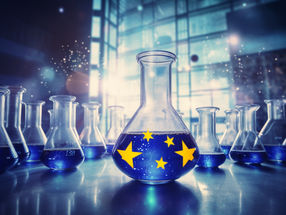Sustainable environmental protection through the Industrial Emissions Directive
Advertisement
The European institutions are close to finalising the second reading of the Industrial emissions Directive (IED). Cefic, the European Chemical Industry Council, supports the objectives of the Directive. Cefic suggests the Directive would be more effective in ensuring sustainable environmental protection if it took greater account of different local needs and circumstances. A justified flexibility is here definitely needed.
The Industrial Emissions Directive (IED) aims to regulate industrial operators in a global EU framework of permits. It matters for all of us because the objective is to manage pollution arising from a wide variety of industrial and agricultural activities, from the production of metals and chemicals to poultry or pig farming. Just as Europe must be seen as whole, environment requires a comprehensive protection.
To achieve this ambition of a high protection, optimized in the long term both from an environmental and economical point of view, the protection provided by the Industrial Emissions Directive needs to be effective by leaving some room for subsidiarity, being experience- driven and cost- effective to ensure optimal societal benefit. A balanced implementation of these principles must be secured.
The next vote of the European Parliament should take into account such principles where applying to the text on which the European Council of Ministers has reached political agreement. This April, the environment committee of the Parliament will indeed adopt the draft on the occasion of the second reading of the IED directive.
The Industrial Emissions Directive builds on successful existing environmental policies
The IED draft follows the path of the Integrated Pollution Prevention and Control Directive (IPPC). Cefic's members support the principles of the current IPPC, and are willing to help ensure the Directive is fully implemented consistently across the EU. The new IED uses the cornerstones of the IPPC like the Best Available Techniques (BAT), which are the methods currently available to industry that best provide for protection of the environment.
Manufacturing sites are currently regulated under the IPPC Directive. The chemicals sector aims to achieve a sustainable chemical industry by supporting innovation and competitiveness whilst reducing its impact on the environment. For environmental and economic reasons, industry strives for efficiency when designing manufacturing processes to minimise emissions and resource use.
The IPPC is a complex “learning by doing” system, which has required time and extensive collaboration between all stakeholders at European and national levels. The IPPC had begun to deliver environmental improvements showing that it had a lot of potential; this trend should not be reversed by disproportionate changes in the IED.
As the IPPC’s implementation was reported to be uneven across some Member States, the European Commission launched a reshaping process with several key ideas: have a more stringent approach for more consistent implementation; set tighter Europe- wide emissions limit values for large combustion plants; and establish an initial quantitative soil assessment with remediation to the original state when the permit ceases.
Some key inputs from the Chemical Industry
Cefic supports regulations that stimulate innovative developments to reduce emissions. As the chemical industry is in a way “the industry of industry”, as it has many downstream users, its experience and added value to this debate are worth being mentioned. The challenge ahead is to balance environmental, economic and societal issues to achieve the goal of environmental protection in a sustainable way.
These issues include recognition of different local conditions such as topography, climate, the wide variety of manufacturing processes or of different types of plants and installations. The IED, therefore, needs to allow a fully justified flexibility based on an environmental, technical as well as an economic assessment. In that respect, local competent authorities are best placed to implement and use, in a transparent and public way, the provisions of the IED to take into account these local variations.
Over-simplicity can be counterproductive if local and specific needs are not taken into consideration. One size does not fit all. Looking for optimally tackling emissions will only be a success if the new IED leaves a space to subsidiarity, empowering local actors to capture the complexity of the environment and find the best possible efficiency in each case taking into account local characteristics when deciding how to manage emissions
This proportionate implementation of the emissions regulations is all the more important since the IED follows an integrated approach, taking into consideration all emissions, their origins and destinations. The setting of a parameter must be proportionate so as to optimise the management of emissions criteria. The reduction of an emission limit must be shaped so as to avoid disproportionate growth of another emission value. All parameters cannot be optimized at once: proper attention must be paid to side effects so as to minimize them when possible.
That is why Cefic advocates that the expertise of the EU stakeholders (experts, authorities…) should be taken into account when adopting decisions based on Best Available Techniques (BAT), through the information exchange forum called the “Sevilla Process”. Such stakeholders know how far it is realistic to improve environmental protection given available technologies and potentially better ones. They need to be well involved, in the spirit of the previous directive IPPC, in the legislative process of defining standards. Emission limit values must be set via an analysis of best available techniques by good performers, but avoiding taking single plants or technical examples deprived of substantial feedback. Such an exchange of EU- wide, appropriate information and of collective experience must be the basis for setting environmental standards.
To maximize real environmental benefits and to minimize unnecessary costs, a risk- based approach must be used when monitoring soil and groundwater and when deciding on soil remediation at cessation of activity. It is indeed essential to give potential investors legal and financial certainty. When investing in an existing site, operators must be in a position to understand what their financial liability would be in relation to past activities of previous operators and to their own activities. The risk- based approach would definitely help deliver this. A big benefit of this approach would be to help avoiding using new sites for new activities: a better legal security would not frighten investors to use old sites and would enable them to appreciate their return on investment. A good environmental protection means also a good space and time consideration.
Cefic supports the possibility of progressively planned compliance with emission limit values by means of transitional national plans. The definition and implementation of standards must take into account investment cycles and previous legislation such as the Large Combustion Plants Directive.
Find the right balance Protecting the environment as a whole when regulating industrial emissions does not preclude a strong and innovative European chemical industry, provided the right balance between economic, environmental and social aspects can be found. Cefic is engaging in the debate for a more sustainable framework for protection of the environment.


































































